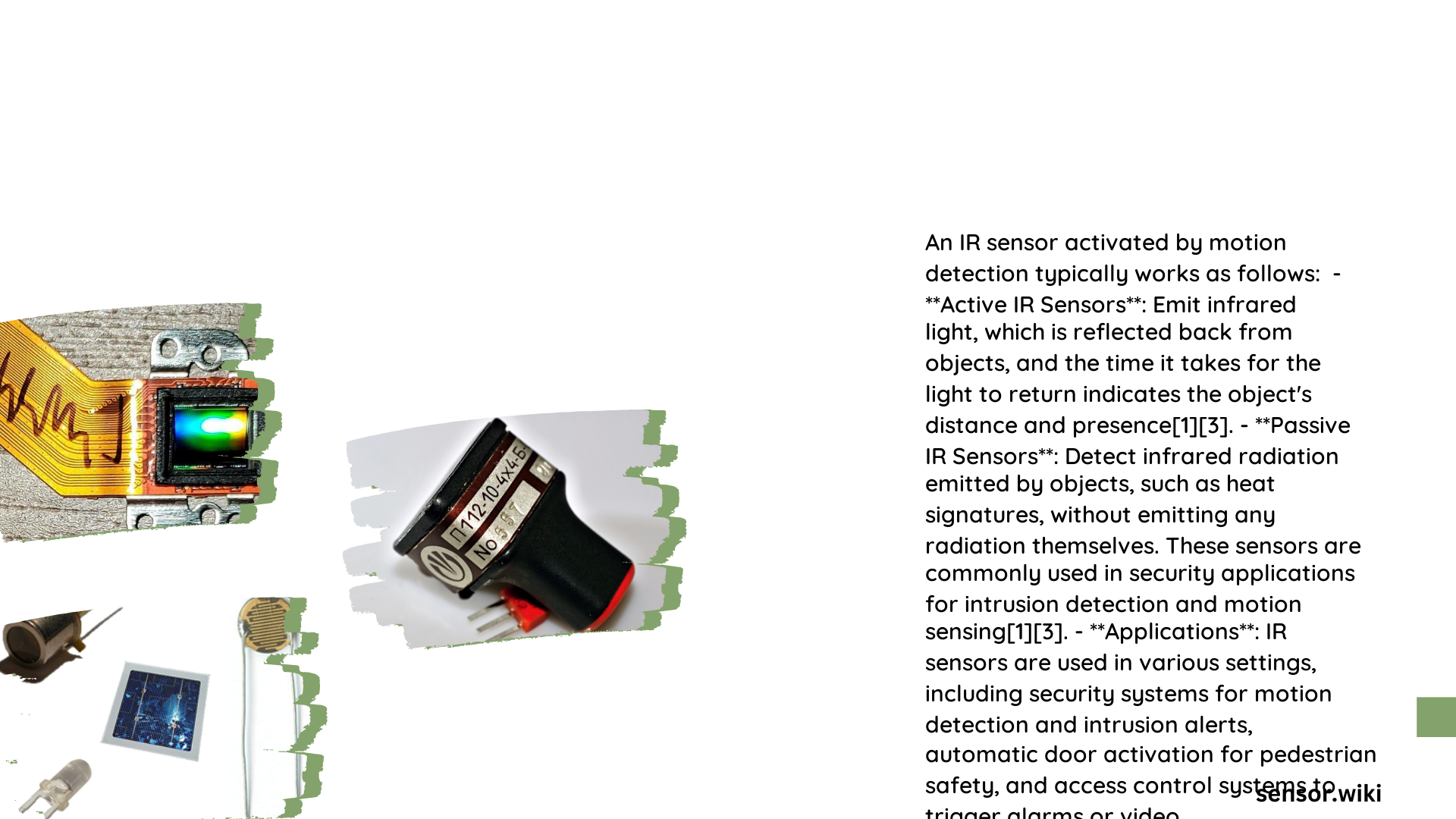Infrared (IR) sensor activation represents a sophisticated technological mechanism that enables precise detection and monitoring across diverse applications. These intelligent sensors leverage electromagnetic radiation in the infrared spectrum to identify object presence, movement, and thermal variations with remarkable accuracy and responsiveness.
What Are IR Sensors and How Do They Work?
IR sensors operate through two primary methodologies:
Active IR Sensor Mechanism
- Emitter-Receiver Configuration
- Transmits infrared light beam
- Receiver detects beam interruption
- Instantaneous signal generation upon obstruction
Passive IR Sensor Mechanism
- Thermal Radiation Detection
- Captures naturally emitted infrared energy
- Identifies temperature differential
- Triggers response based on movement patterns
What Determines IR Sensor Activation Distance?

| Sensor Type | Typical Detection Range | Key Characteristics |
|---|---|---|
| Active IR | 1-15 meters | Precise beam interruption |
| Passive IR | 5-12 meters | Heat signature tracking |
Factors Influencing Detection Performance
- Sensor Quality
- Environmental Conditions
- Optical Components
- Signal Processing Algorithms
How Do IR Sensors Generate Output Signals?
Voltage State Transitions
- Active IR Sensors
- High State (Uninterrupted): 3.3V-5V
-
Low State (Blocked): 0V
-
Passive IR Sensors
- Low to High Transition
- Voltage Range: 0-5V
- Millisecond Response Time
What Are Critical Activation Thresholds?
Sensitivity Parameters
- Threshold Voltage Levels
- Low Trigger: 0.3V
- High Trigger: 0.7V
- Adjustable Sensitivity Ranges
- Minimize False Positives
- Optimize Detection Accuracy
Where Are IR Sensors Predominantly Used?
Application Domains
- Security Systems
- Home Automation
- Industrial Monitoring
- Robotics
- Consumer Electronics
What Challenges Exist in IR Sensor Activation?
Technical Limitations
- Temperature Interference
- Signal Noise
- Limited Angular Detection
- Environmental Constraints
How Can Performance Be Enhanced?
Optimization Strategies
- Advanced Signal Processing
- Temperature Compensation
- Hybrid Sensor Configurations
- Precision Optical Design
Technical Specifications Comparison
| Parameter | Active IR Sensor | Passive IR Sensor |
|---|---|---|
| Response Time | <10ms | 10-500ms |
| Detection Range | 1-15m | 5-12m |
| Power Consumption | Moderate | Low |
Best Practices for IR Sensor Implementation
Deployment Recommendations
- Optimal Positioning
- Regular Calibration
- Environmental Shielding
- Comprehensive Testing
Future Technological Trajectory
Emerging Trends
- Machine Learning Integration
- Enhanced Signal Processing
- Miniaturization
- Multi-Spectral Sensing
Reference:
1. Active Infrared Sensors Research
2. Global Sensor Technology Insights
3. Advanced IR Sensing Techniques
